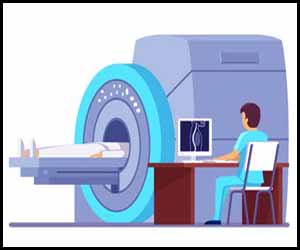- Home
- Editorial
- News
- Practice Guidelines
- Anesthesiology Guidelines
- Cancer Guidelines
- Cardiac Sciences Guidelines
- Critical Care Guidelines
- Dentistry Guidelines
- Dermatology Guidelines
- Diabetes and Endo Guidelines
- Diagnostics Guidelines
- ENT Guidelines
- Featured Practice Guidelines
- Gastroenterology Guidelines
- Geriatrics Guidelines
- Medicine Guidelines
- Nephrology Guidelines
- Neurosciences Guidelines
- Obs and Gynae Guidelines
- Ophthalmology Guidelines
- Orthopaedics Guidelines
- Paediatrics Guidelines
- Psychiatry Guidelines
- Pulmonology Guidelines
- Radiology Guidelines
- Surgery Guidelines
- Urology Guidelines
Cardiac MRI findings may predict cardiac disease risk in Fabry disease patients

Canada: Cardiac MRI findings of late gadolinium enhancement (LGE) and left ventricular hypertrophy (LVH) can be used for identifying Fabry disease patients at high risk of adverse cardiac events, finds a recent study published in the journal Radiology.
Fabry disease is a rare X-linked lysosomal disorder that can adversely affect the heart by causing hypertrophy or thickening of the heart walls. The degree of disease severity can be assessed by measuring progressive LVH, LGE, and diastolic dysfunction, which account for approximately 75% of all related deaths.
Identifying patients at elevated risk of adverse cardiac events is important given that cardiac involvement is the leading cause of mortality in Fabry disease. Identification of imaging findings that predict adverse cardiac events is needed to enable the identification of high-risk patients.
Kate Hanneman, Department of medical imaging at Toronto General Hospital, Canada, and colleagues conducted the study to establish the prognostic value of cardiac MRI findings in men and women with Fabry disease.
This retrospective cohort study included consecutive women and men with gene-positive Fabry disease who had undergone cardiac MRI at a single large tertiary referral hospital between March 2008 and January 2019. Evaluators of cardiac MRI studies were blinded to all clinical information.
Adverse cardiac events were assessed as a composite end-point, defined as ventricular tachycardia, bradycardia requiring device implantation, severe heart failure, and cardiac death.
Ninety patients (mean age, 44 years ± 15 [standard deviation]; 59 women) were evaluated.
Read Also: Rare presentation of Fabry disease as ventricular tachycardia: EHJ Case Report
Key findings of the study include:
- After a median follow-up period of 3.6 years, the composite end-point was reached in 21 patients (incidence rate, 7.6% per year).
- Left ventricular hypertrophy (LVH) and late gadolinium enhancement (LGE) were independent predictors of the composite end-point in adjusted analysis (LVH hazard ratio [HR], 3.0 and LGE HR, 7.2).
- Patients with extensive LGE (≥15% of left ventricular mass) were at the highest risk (HR, 12).
- Sex did not modify the relationship between the composite end-point and any of the cardiac MRI parameters, including LVH and LGE.
Read Also: Migalastat is new treatment for a rare genetic disorder, Fabry disease
"These data support the necessity for future larger studies to evaluate whether cardiac MRI can be used to prospectively identify high-risk patients and to establish Fabry disease-specific prediction models," concluded the authors.
The study, "Left Ventricular Hypertrophy and Late Gadolinium Enhancement at Cardiac MRI Are Associated with Adverse Cardiac Events in Fabry Disease," is published in the RSNA journal Radiology.

Disclaimer: This site is primarily intended for healthcare professionals. Any content/information on this website does not replace the advice of medical and/or health professionals and should not be construed as medical/diagnostic advice/endorsement or prescription. Use of this site is subject to our terms of use, privacy policy, advertisement policy. © 2020 Minerva Medical Treatment Pvt Ltd